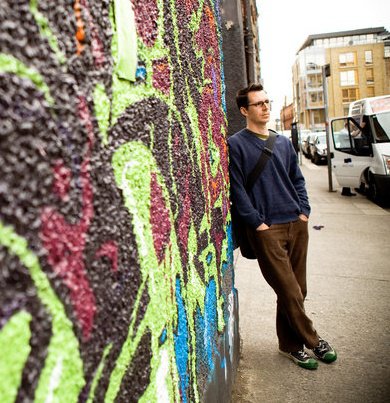School of Visual Art and Design
Faculty and Staff Directory
Andrew Graciano
| Title: | Director Professor of Art History (and Medical Humanities and Culture) |
| McCausland College of Arts and Sciences | |
| Email: | graciano@mailbox.sc.edu |
| Phone: | 803-777-6631 |
| Office: | McMaster, 316 |
| Resources: | Curriculum Vitae [pdf] |

Education
Ph.D., University of Virginia, 2002
Research
I was invited in 2023 to be a co-investigator on a three-year grant (2024-2027) from the Czech Science Foundation, awarded to the Czech Academy of Sciences’ Institute for Art History (Prague). The project examines a range of significant exhibitions in the Czech Lands and Central Europe in the 19th century, and it includes scholars from the Institute as well as Charles University, the Sorbonne, the University of Ljubljana, and the University of Wroclaw. My role is to contextualize these exhibitions with other examples in Western Europe. The culmination of the effort will be a symposium and an edited volume, for which I will be co-editor and co-author.
Around the same time, I was invited to write three essays for publication in a massive three volume work, The Bloomsbury Encyclopedia of Visual Culture, forthcoming in 2026 or 2027. The essays have been accepted and simply await printing.
More recently, in 2024 and 2025, I have published two book reviews in The Social History of Medicine.
Research interests include: the history of anatomical study in artistic training; art collections and displays of national significance after the defeat of Napoleon; the Felix Meritis Maatschappij (Happiness through Merit Society) of Amsterdam; Charles Howard Hodges and Dutch official portraiture in the early 19th century; Africa and the Middle East in European ‘Orientalist’ paintings; and artistic representations of nascent national identity in 19th-century Puerto Rico.
Recent Publications
[co-editor and contributor] Space, Objects and Artists: Building a Cultural Public in the Czech Lands, 1790-1918 (Prague: Artefactum, 2026). Peer reviewed. Forthcoming in 2027.
3 entries (2,000 words each) for Bloomsbury Encyclopedia of Visual Culture, volume 1, Theories of Visual Culture, eds. Julian Haladyn and Michael Gardiner (forthcoming Bloomsbury, 2026). Invited, peer reviewed.
- “Light and Illumination as Generative Metaphors in the Western Tradition of Thought”
- “Visuality in Human Development: ‘On the Aesthetic Education of Man’”
- “Visuality in the History of Human Anatomical Study”
Book Review: Michael Sappol, Queer Anatomies: Aesthetics and Desire in the Anatomical Image, 1700-1900 (Bloomsbury Press, 2024), in Social History of Medicine (2025). https://doi.org/10.1093/shm/hkaf065
Book Review: Natasha Ruiz-Gómez, Visual Culture of Pathology (Penn State University Press, 2024), in Social History of Medicine (Nov. 2024). https://doi.org/10.1093/shm/hkae072
[editor and contributor] Visualizing the Body in Art, Anatomy, and Medicine since 1800: Models and Modeling (Routledge, 2019).
Contributed entries to Anatomy: Exploring the Human Body (Phaidon, 2019):
- Charles Bell, “Muscles of the Face,” from Essays on the Anatomy of Expression in Painting (1806), plate II.
- Jean-Galbert Salvage, Anatomie du gladiateur combatant (1812)
- James Reynolds, “The Principal Variations of Mankind,” from Physical Geography (London, 1851)
- Frankenstein’s Monster, film poster image (1935)
- James Cameron, storyboard sketches, Terminator (c.1984)
- Sydney Parkinson, Maori Chief (c.1780)
- Human anatomy overview essay
“A Dutch Connection: Re-identifying a Portrait Subject at the London National Portrait Gallery,” Oud Holland (131: 3 & 4, 2018): 179-192.
Book Review: “The Roles and Influence of Monographic Exhibitions on Art Historical Scholarship,” Journal of Art Historiography (no. 19, December 2018), a 12-page review of Maia Gahtan and Donatella Pegazzano, eds. Monographic Exhibitions and the History of Art (Routledge, 2018).
Teaching
ARTH 327 Eighteenth-Century European Art
ARTH 330 Nineteenth-Century European Art
ARTH 333 Art, Anatomy, and Medicine since 1700
500/700-level 18th/19th C. seminar topics: Collections and Commemorations of Napoleonic
Defeat; Alternative Exhibitions; Art and Science; Women and the Arts; Art and Ideas;
Art and Anatomy; Landscape and National Identity; Art and Politics; Portraiture.